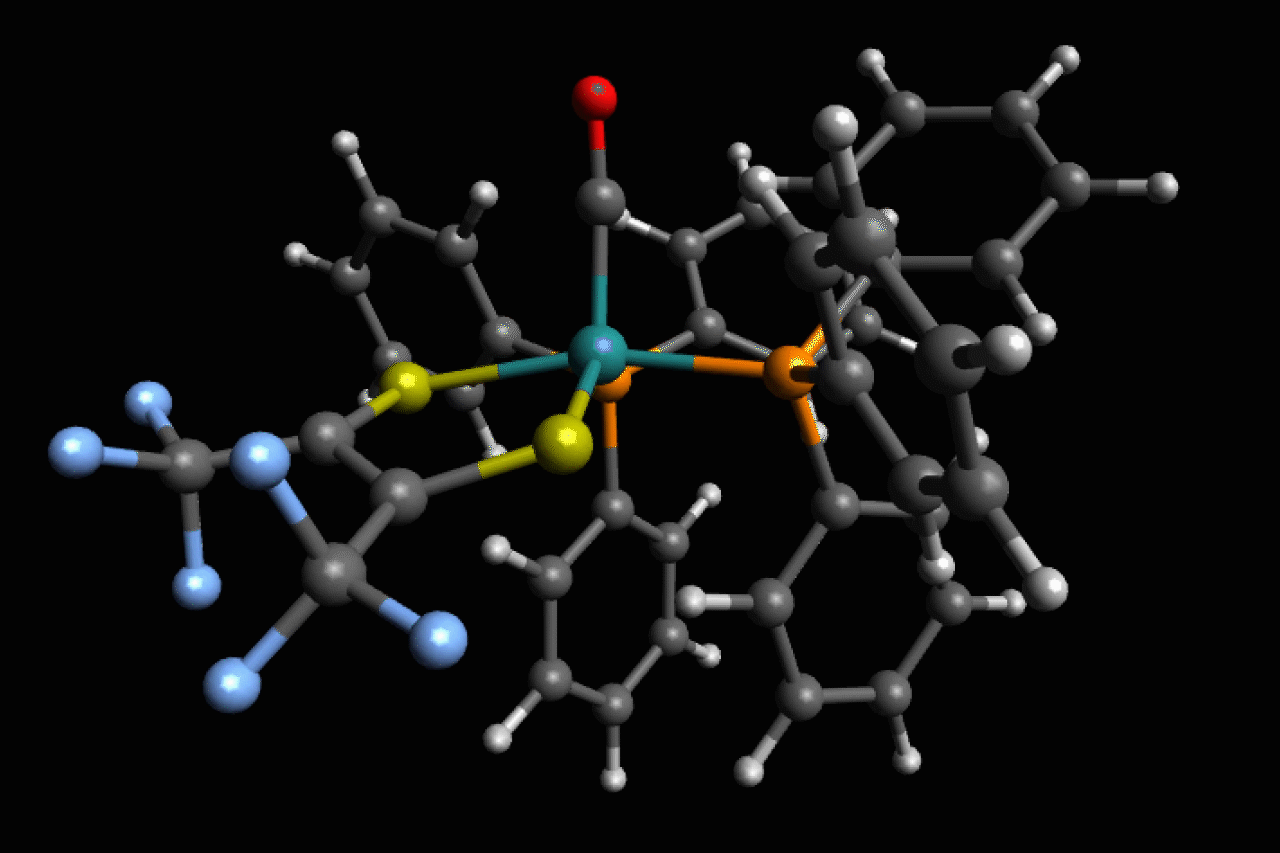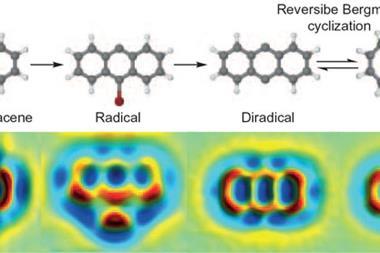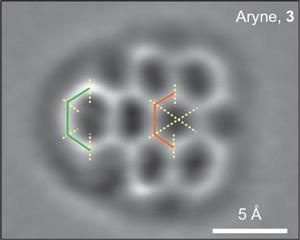Using 651 snapshots recorded within less than 100 trillionths of a second, scientists have created the first film of a rotating carbonyl sulfide molecule. The movie gives a glimpse of the atomic world’s quantum nature as the molecule’s wavefunction forms geometric patterns that look quite different to its straight rod shape.
Shooting molecular movies allow researchers to watch fundamental processes – such as chemical bond rearrangements or electron cloud oscillations – in action. But ultrafast motions like rotation in small molecules are hard to control and capture. A team of German and Danish scientists has now managed this feat.
Using a laser setup, they set molecules of carbonyl sulfide (OCS) spinning in unison. At intervals of around 200 quadrillionths of a second the molecules were Coulomb exploded, which reveals their position at the time of explosion. The team shot a total of 651 pictures, covering 125 trillionths of a second or one and a half revolutions of the molecule.
The resulting movie reveals carbonyl sulfide’s richly coloured quantum carpet – the molecule’s angular probability distribution of its quantum mechanical wavefunction. Although OCS is a linear molecule, it isn’t a rotating stick that has a fixed position at any one point. Instead, the movie shows how its wavefunction, and thus the probability to find it in one place, points in several directions at the same time. The measured probabilities proved almost a perfect match with calculated values.
Since the method allows molecular motions to be examined in unprecedented detail, the researchers think it could help them image dynamics in chiral molecules or investigate processes like molecular torsion.
References
E T Karamatskos et al, Nat. Commun., 2019, 10, 3364 (DOI: 10.1038/s41467-019-11122-y)

























No comments yet